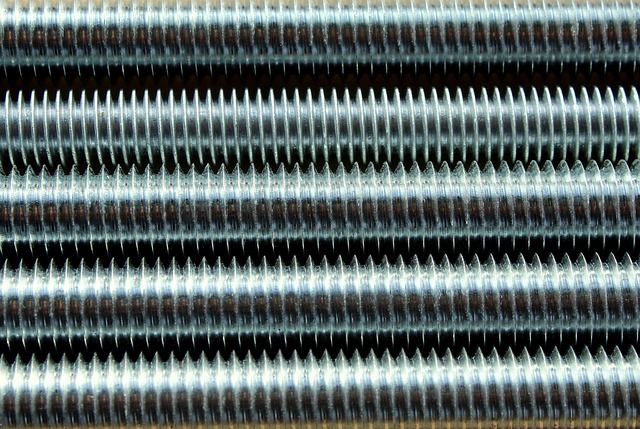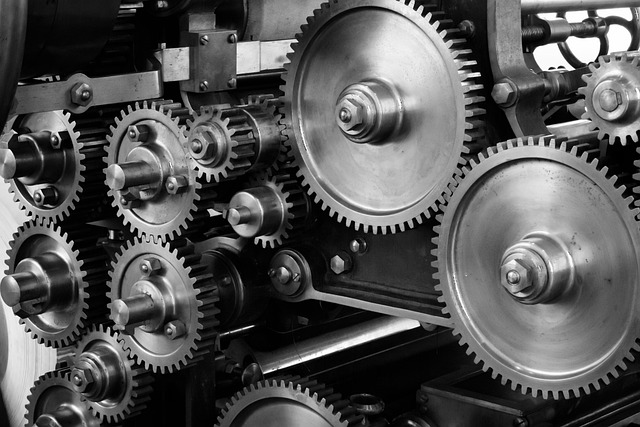We utilise force to change the shape of objects when we bend a metal rod, push a sponge, or stretch a rubber band. However, have we ever seen that various materials react differently to the same force?

A steel wire hardly changes length, whereas a rubber band expands readily. This occurs as a result of the varying elastic characteristics of various materials. Elastic modulus is a measurement of a material’s resistance to deformation under stress.
To design the machines, structures, and everyday objects that can withstand forces without deforming excessively, scientists and engineers use elastic moduli to understand how materials behave under different stresses.

What is Elastic Modulus?
A key characteristic of materials that measures their capacity to withstand deformation under stress is their elastic modulus, often known as their modulus of elasticity. To put it simply, it gauges a material’s stiffness. A material’s stiffness, or ability to withstand deformation, increases with its modulus
Elastic modulus is mathematically defined as the ratio of stress to strain in the elastic limit, where:
Elastic Modulus = Stress / Strain Here:
Stress is the force applied per unit area.
Strain is the relative deformation (change in shape or size) that occurs due to stress.
There are three main types of elastic moduli based on different types of deformation:
Young’s Modulus (Modulus of Elasticity)
Shear Modulus (Modulus of Rigidity)
Bulk Modulus
Young’s Modulus (Y)
Definition: Young’s modulus measures how much a material stretches or compresses under tensile (pulling) or compressive (pushing) forces.
Y = Longitudinal Stress / Longitudinal Strain
Higher Young’s modulus → The material is rigid (e.g., steel, glass).
Lower Young’s modulus → The material is flexible (e.g., rubber, plastic).
Example:
A rubber band has a low Young’s modulus because it stretches easily.
A steel wire has a high Young’s modulus because it resists stretching.
Applications:
It is being used in the design of bridges, buildings, and airplanes to ensure they do not deform excessively under load.
Its helps in manufacturing of wires and cables that can withstand tension without breaking.

Shear Modulus (G)
Definition: Shear modulus measures how a material resists shape change when forces act parallel to its surface (shearing forces).
G = Shear Stress / Shear Strain
Higher Shear modulus → The material resists shape change better (e.g., metal).
Lower Shear modulus → The material easily changes shape under shear stress (e.g., rubber).
Example:
When we apply force on a block of jelly from the top while keeping the bottom fixed, its shape changes significantly → Low shear modulus.
When a metal plate is sheared, it resists deformation better → High shear modulus
.
Applications:
It is being used in machine parts and beams to ensure they do not twist or bend easily.
Important for designing gears and mechanical components that undergo shear stress.
Bulk Modulus (K)
Definition: Bulk modulus measures a material’s resistance to uniform compression when pressure is applied from all sides.
K = Bulk Stress / Volume Strain
Higher Bulk modulus → The material is incompressible (e.g., metals, diamonds).
Lower Bulk modulus → The material compresses easily (e.g., gases, rubber).
Example:
Water and steel have high bulk modulus values because they are difficult to compress.
Air has a low bulk modulus, meaning it compresses easily.
Applications:
Used in designing submarines and deep-sea equipment that need to withstand high water pressure.
Helps in fluid mechanics to study how liquids and gases respond to pressure.

Comparison of Elastic Moduli
ModulusType | Symbol | Measures Resistance to | Common Examples |
Young’s Modulus | Y | Stretching or compression | Steel, rubber, glass |
Shear Modulus | G | Shearing forces | Metal, jelly, foam |
Bulk Modulus | K | Volume change under pressure | Water, steel, air |
Significance of Elastic Moduli
Elastic moduli are essential in engineering, construction, and material science. They help in:
Building structures that are strong so far flexible, preventing collapse during earthquakes.
Manufacturing vehicles that balance stiffness and flexibility for better durability.
Aerospace engineering, where materials must resist deformation while remaining lightweight.
Elastic moduli ensures materials are used efficiently, providing both strength and flexibility where needed.
Poisson’s ratio :- Within the elastic limit the ratio of lateral strain to the longitudinal strain is called Poisson’s ratio.
PR = Lateral strain / Longitudinal strain
Elastic potential energy in a stretched wire:- The work done stretching a wire against the internal restoring force gets stored in the form of potential energy in the wire is called elastic potential energy.
Here, deforming force = F ; increase in length delta L
Work done, W = Average force x increased length.
U = W = I /2 stress x strain x volume
Here, U = Elastic potential energy.
Substance | Density p (Kg m-3) | Young’s Modulus Y (109 N m-2) | Ultimate strength Sigmau (106 N m-2) | Yield strength sigmaY (106 N m-2) |
Aluminium | 2710 | 70 | 110 | 95 |
Copper | 8890 | 110 | 400 | 200 |
Iron | 7800-7900 | 190 | 330 | 170 |
Steel | 7860 | 200 | 400 | 250 |
Glass* | 2190 | 65 | 50 | – |
Concrete | 2320 | 30 | 40 | – |
Wood* | 525 | 13 | 50 | – |
Bone* | 1900 | 9.4 | 170 | – |
Polystrene | 1050 | 3 | 48 | – |
* Substances were tested under compression
Note
Elastic moduli is essential to understand how materials react to forces. Bulk modulus indicates resistance to compression, shear modulus establishes form resistance, and Young’s modulus gauges stretching or compression. These ideas are essential for creating machines, buildings, and commonplace items that improve efficiency and safety.
Materials’ resistance to deformation under stress is gauged by their elastic modulus. Within the material’s elastic limit, it is defined as the ratio of stress to strain.
The three types of elastic moduli are:
Young’s modulus (Y): Measures resistance to stretching or compression.
Shear modulus (G): Measures resistance to shape change due to shear stress.
Bulk modulus (K): Measures resistance to volume change under pressure.
The SI unit of elastic modulus is Pascal (Pa) or Newton per square meter (N/m²). It is also expressed in Gigapascals (GPa) for materials with high stiffness.
Steel has a higher Young’s modulus than rubber because it is much stiffer and resists deformation more effectively. Rubber stretches easily under force, meaning it has a low Young’s modulus.
Young’s modulus measures how a material stretches or compresses under a force applied along its length.
Bulk modulus measures how a material resists uniform compression from all directions.
A material with a low shear modulus easily changes shape under shear stress, e.g, jelly and rubber deform easily when force is applied parallel to their surface.
Elastic moduli help engineers and scientists design:
Bridges and buildings that can withstand stress without collapsing.
Aircraft and automobiles with materials that are strong yet lightweight.
Mechanical components like gears and springs that resist deformation.